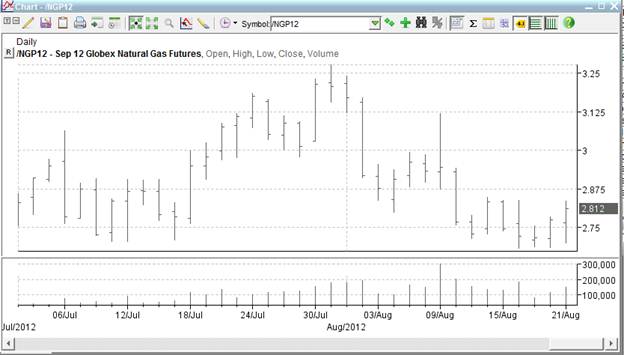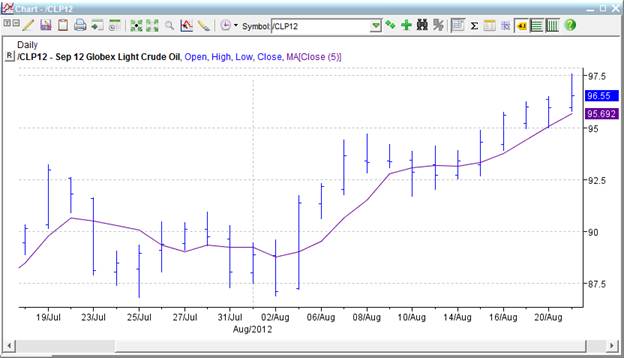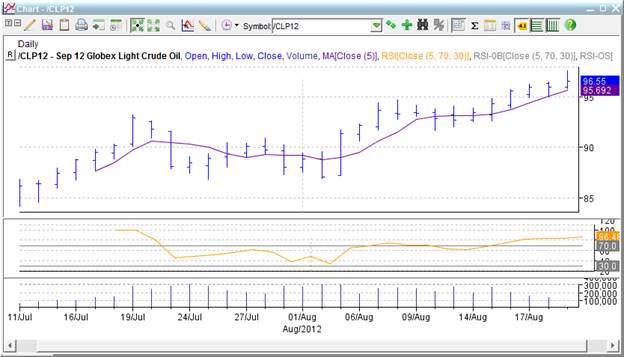1) Volume - One of the simplest clues to the strength of price movement is that of the Volume of contracts traded. If a price shows a large range or change in direction on a particular day, looking at the volume of contracts traded indicates how well supported that move was by the market participants. A $0.10 movement up or down in natural gas is not very significant if a low volume of contracts traded. On the other hand, when large volumes trade, that definitely reinforces the price action for the day. It’s as if those trading have agreed on the price outcome. The chart below is a Daily Bar Chart with Volume for natural gas. Notice that on August 9th, prices traded in a $0.25 range and a very large amount of contracts exchanged hands, solidifying the move. Then, on August 10th, prices fell and the second-highest Volume for the contract traded. Both of these Volumes add legitimacy to the price action for those days

2) Moving Averages – For those of you who have had statistics, you should be familiar with the term “reversion to the mean.” For those of you who have not, the concept hinges on the idea that all prices will eventually return to their average despite dramatic movements up or down. I have found this to be especially true for energy commodities, at least in the short-term. Therefore, tracking commodity moving average prices can be a good signal for a change in the direction of a trend. For instance, the chart below shows that the Moving Average for September, 2012, crude oil over a 30-day period was $95.69 while prices had risen to as high as $97.50. This means there is a good probability that they will eventually fall towards $95.69. It may be a gradual decline which also means the average will change, but as long as the MA is lower, prices will gravitate towards it. The exact opposite occurs when prices fall below the MA. The chart below illustrates this principal with the September, 2012, crude oil contract. Note that the timeframe for the MA is set to the particular Trader’s needs. I have set the MA at 5 days, as that represents a full week of trading (regular session, pit trading only occurs on weekdays). See how the prices, while moving above and below the MA, ultimately return to it. This is a key sign for making buy/sell decisions.

3) Relative Strength Index - Relative Strength Index (RSI) is a momentum oscillator that measures the speed and change of price movements. RSI oscillates between zero and 100. Traditionally, RSI is considered overbought when above 70 and oversold when below 30. RSI can also be used to identify the general trend. (http://stockcharts.com/school/doku.php?id=chart_school:technical_indicators) Understanding the exact RSI calculation is not necessary to understand how to use this indicator. The next chart is a Daily Bar Chart with Volume, MA and now, the RSI study. Note that the current RSI is over "70" which is considered “overbought. This could, therefore, be a signal to "Sell."
